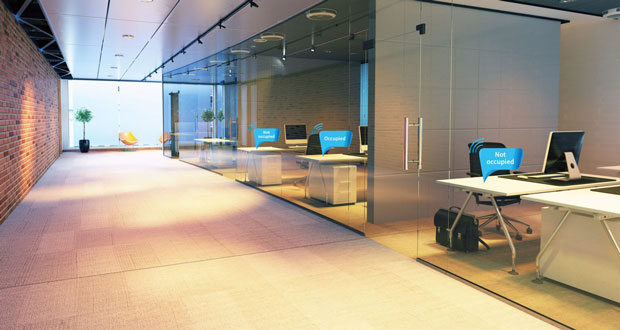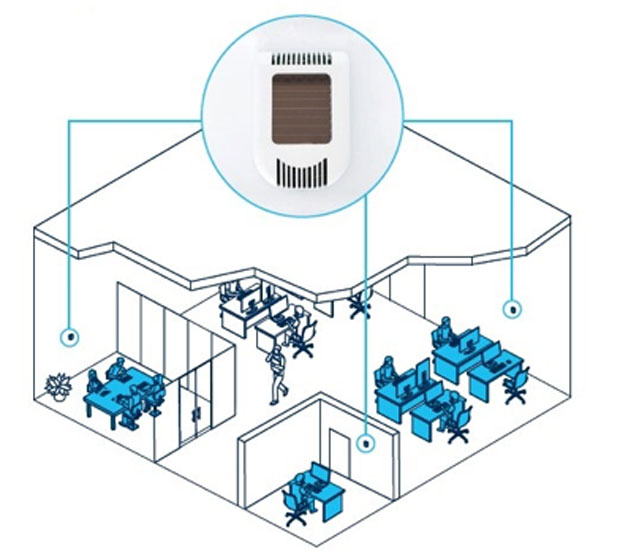Written by Peter Burbidge, MD, Pressac
One of the biggest costs for most organisations is their office space. Or at least, it has been up until now.
Companies have been forced to take a highly agile approach to meet challenges from coronavirus restrictions. Which has led many businesses to realise they can manage with less space. On top of this realisation comes the related thought: how to fully get the best out of the space they do use? In other words, space optimisation.
Creating a safe, productive space
As we’ve seen over the past year, the definition of the ‘workplace’ is evolving.
In the short term, social distancing restrictions mean that businesses will need more space per person. For a long time now, companies have been squeezing more and more people in – with just 8m2 per employee becoming a typical density.
Those days are gone.
For offices to operate safely, ratios will have to shoot up again. This means organisations getting creative with their space management, looking at things like shifts, staggered start times and continuing remote working on a rota basis to overcome the overcrowding hurdle.
Some sectors, like technology and e-commerce, are already likely to embrace virtual working. In fact, Twitter CEO Jack Dorsey has announced that employees can work from home permanently if they want to.
Businesses may start thinking they don’t need space for all of their employees, maybe only 75% or 60%. Or they might not expand as previously planned.
Consider this. A staggering 40% of office space in traditional workplaces is unused at any given time. Clearly, there are opportunities aplenty for companies to save money and optimise their space.
While the trend for home working has been accelerated, the pandemic has also revealed the limitations to this set-up. Many organisations depend on face-to-face interaction and collaboration and serendipity.
Looking beyond Covid – and there will be such a time – will social distancing become so ingrained that we’ll ever feel comfortable occupying indoor space in very close proximity to others? Only time will tell. Perhaps the better question is: do organisations want the same kind of space they’ve occupied in the past?
Your workplace is your window on your business and plays a huge part in brand perception. Plus, you need your workspace to be an inviting one, a place where top talent want to work and customers want to visit – or it runs the risk of being undesired by employees and visitors alike.
Workspace optimisation – what does it mean? And crucially, how do you do it?
First off, it means making the best use of your space.
Organisations that have clear insights into occupancy patterns and behaviours can learn which areas remain in high demand over those that are rarely used. In turn, identifying these underused spaces will help facility and property managers to determine whether new workspace designs are required, or whether there is an opportunity to consolidate.
This is where smart sensor technology can help.
Smart sensors can be used to monitor utilisation of desks, offices, meeting rooms, break-out areas, canteen tables, meeting booths, corridors… along with other areas such as lobbies, lifts and bathrooms. Pretty much any space within a building. You can track how occupancy changes over time – through a day, week, month or year – to make informed decisions about how you design your workspace.
Smart sensors work by detecting and monitoring people within a space – either using passive infrared (PIR) motion sensors to detect presence or time of flight (ToF) movement sensors to count people going in or out of a doorway.
They send data locally or to the cloud using a smart gateway, which you can then access and analyse.
Tracking space usage over time allows you to make better-informed planning decisions. An accurately measured office will prevent unnecessary wastage. Floors or even whole buildings can be closed when the data says they’re unused – either on certain days or permanently – thereby reducing costs.
This means you are fully leveraging every square foot of space, providing the exact number and size of meeting rooms to match required capacity.
You can monitor workspace occupancy and availability, helping you to effectively manage desk and room bookings and reduce ‘no-shows’ by automatically cancelling bookings if no one turns up.
Sensors can also be used to determine if the indoor environment is healthy with air quality and temperature monitoring.
The workplace and workspace as we knew it is no more. Covid has no doubt accelerated new trends, but forward-thinking businesses were already adopting smart technology to optimise their space. Now, more and more organisations can see the benefits, realising that trundling along as they were before is no longer an option.
Meeting the short-term challenges presented by the pandemic has opened up new opportunities to reap long-term benefits, with space optimisation leading to more agile, smarter ways of working.
About Pressac
As a trusted partner to some of the world’s leading companies, we’ve been designing and manufacturing smart technology for over 60 years.
With in-house design, development and quality-assurance experts, plus our own 5,000sqm high-tech UK manufacturing facility, we can manage the full lifecycle of product creation, from design and prototyping to manufacture and distribution.
We partner with our customers to help deliver scalable, cost-effective, compliant solutions that offer the very best performance, flexibility and reliability.
Find out more: www.pressac.com
-ends-
To have your industry news published in the pages of FMJ’s news section, Month in FM, and here online on fmj.co.uk, please send your news and image to Danny Grange danny.grange@kpmmedia.co.uk
The view or information contained within these unedited press releases, are that of the company producing it and not necessary the views of kpm.








